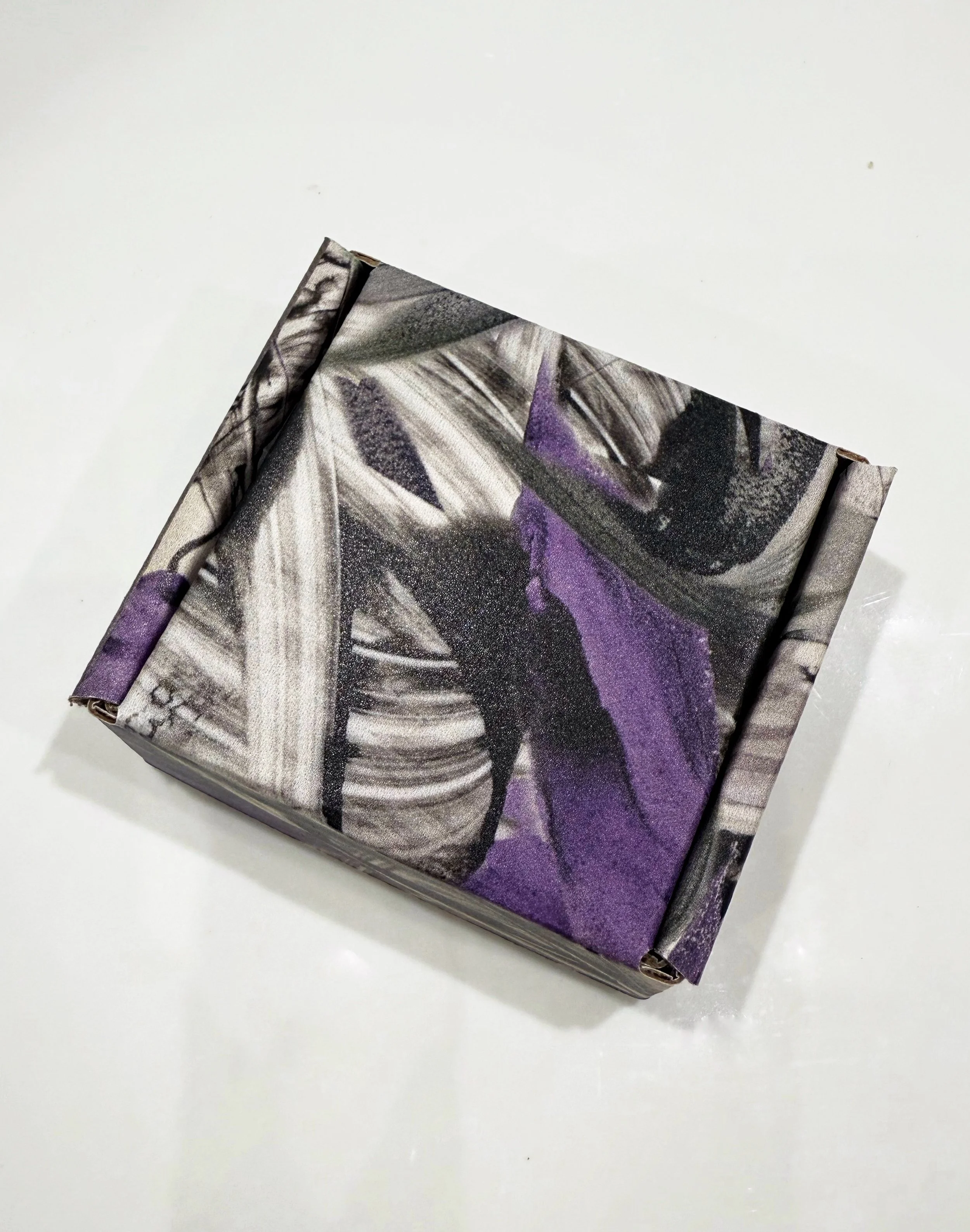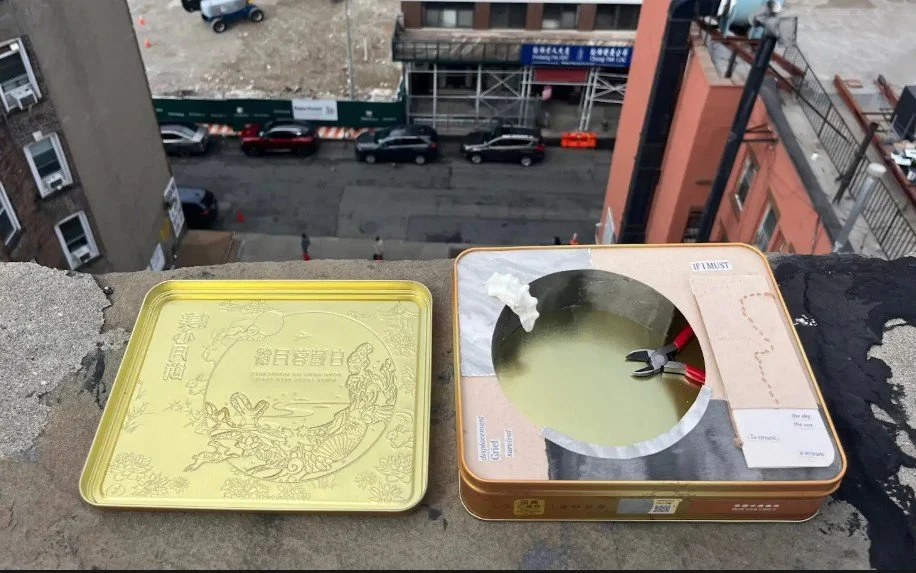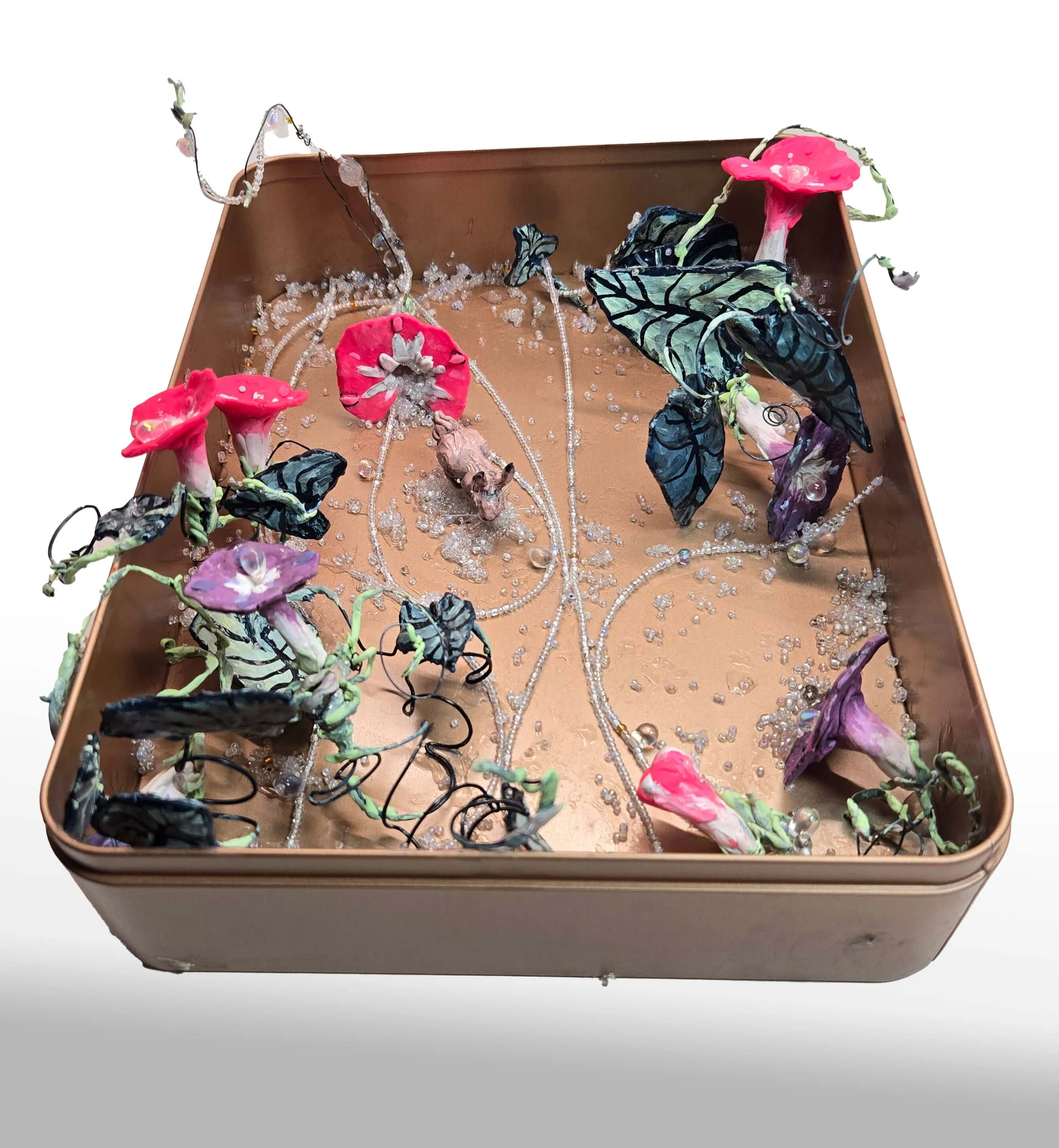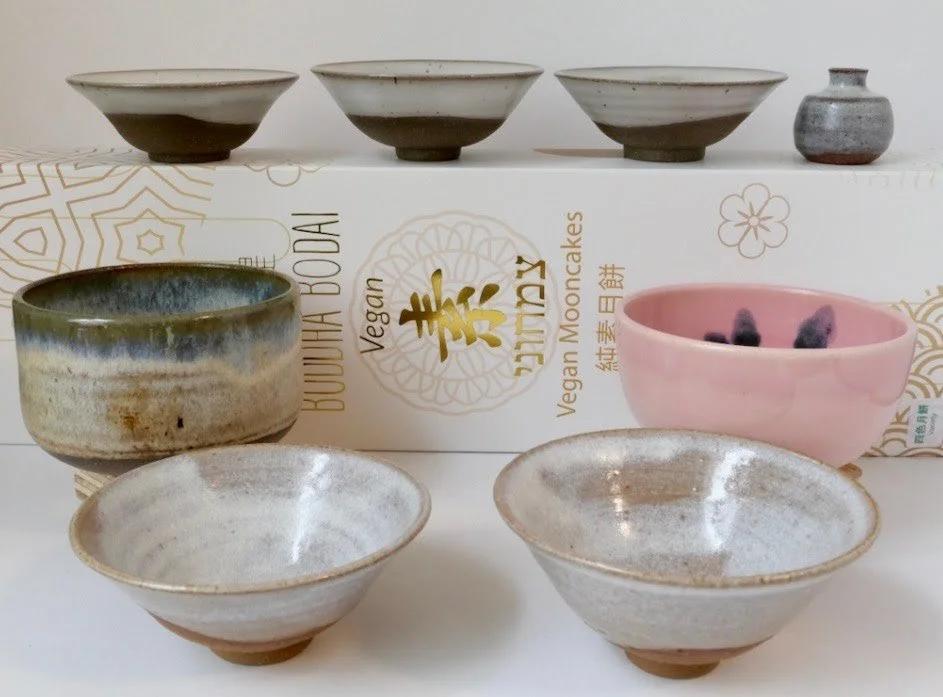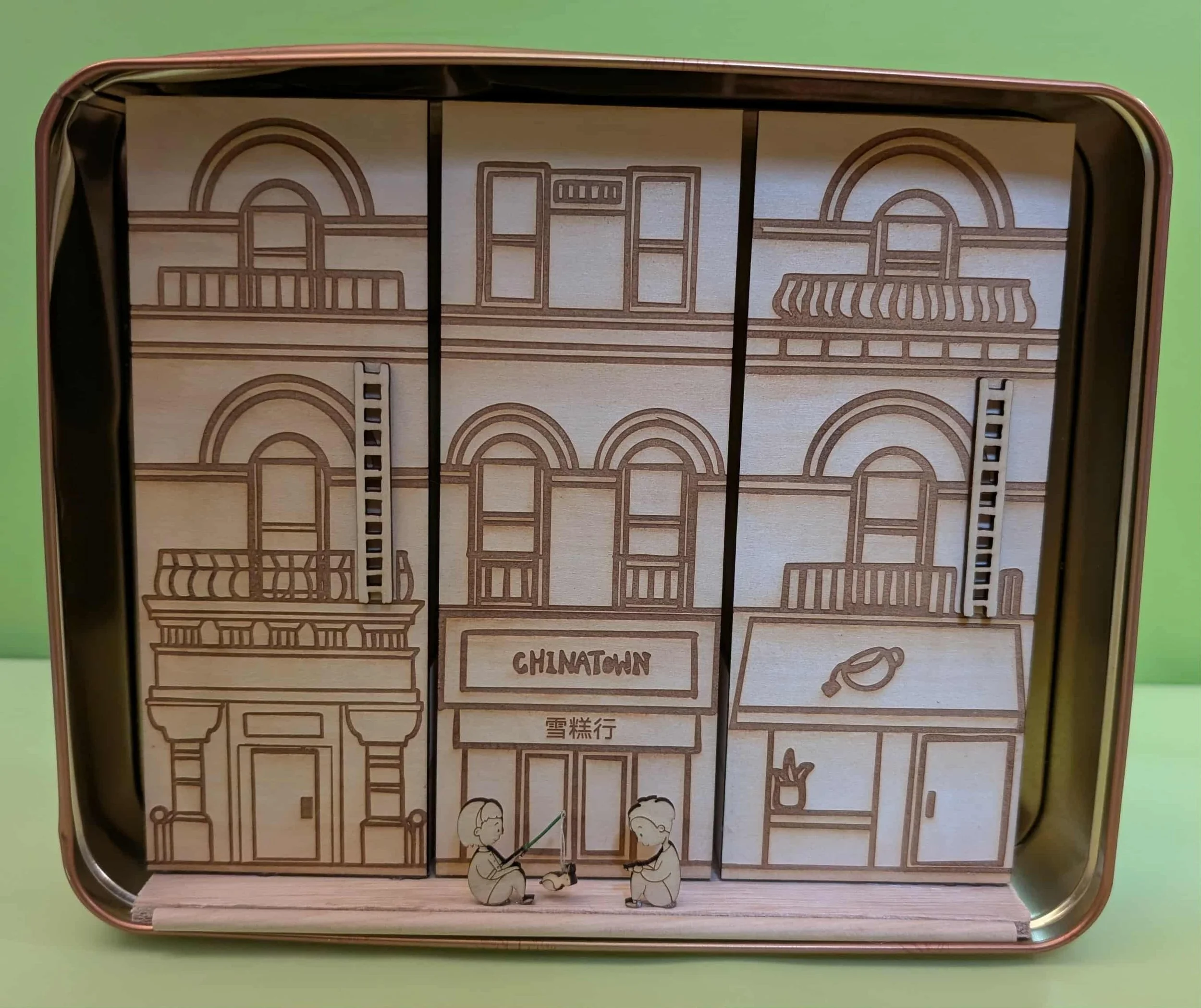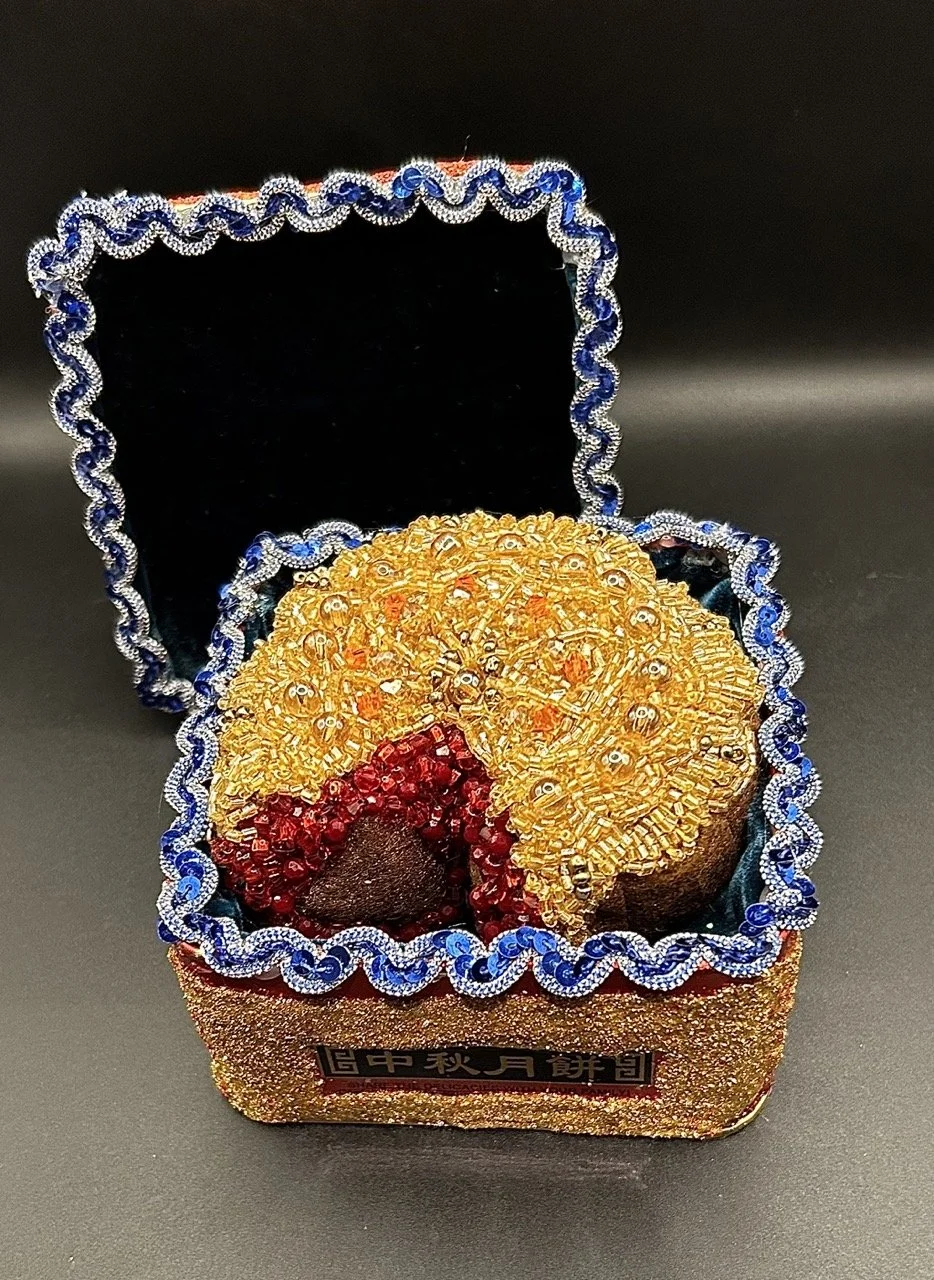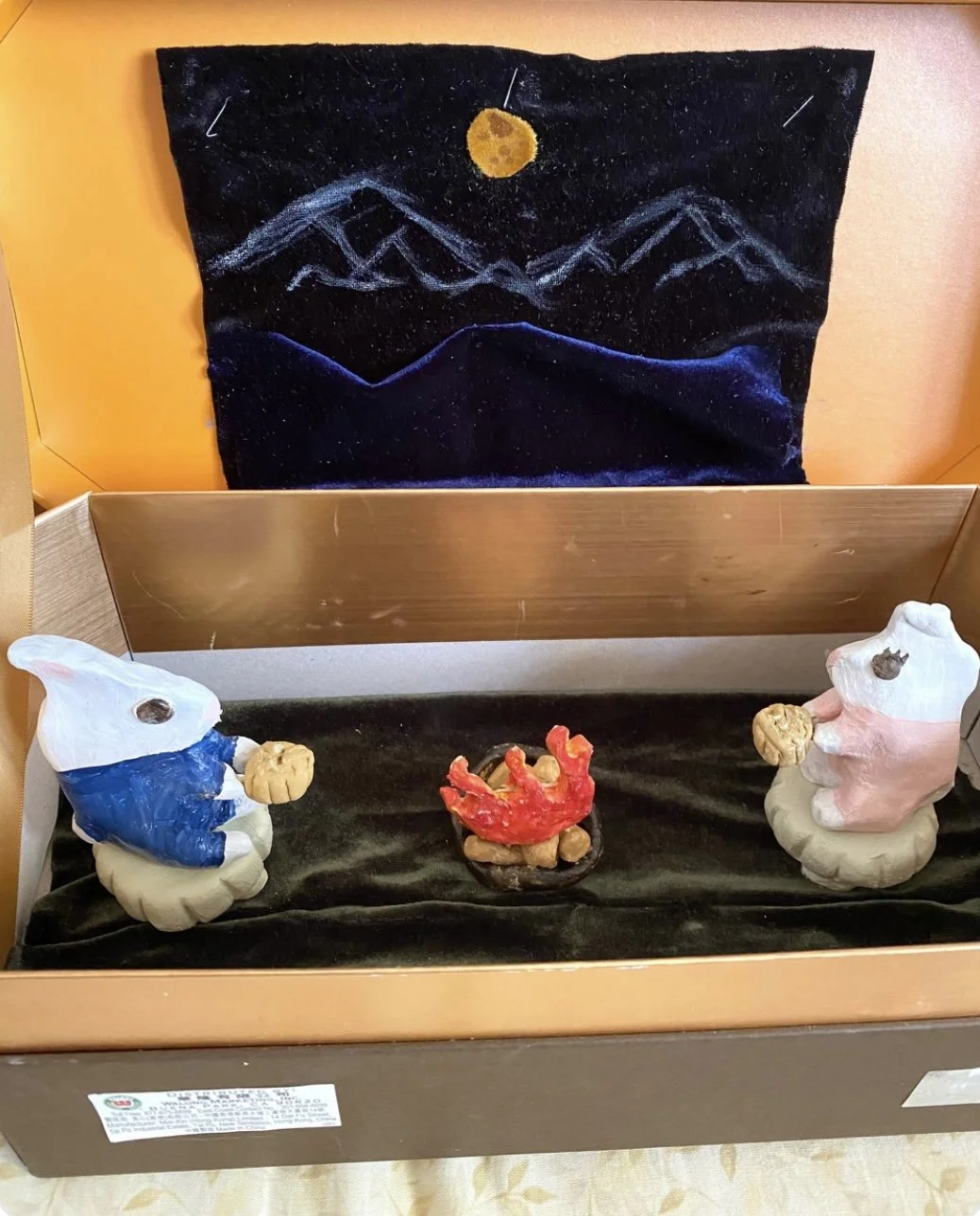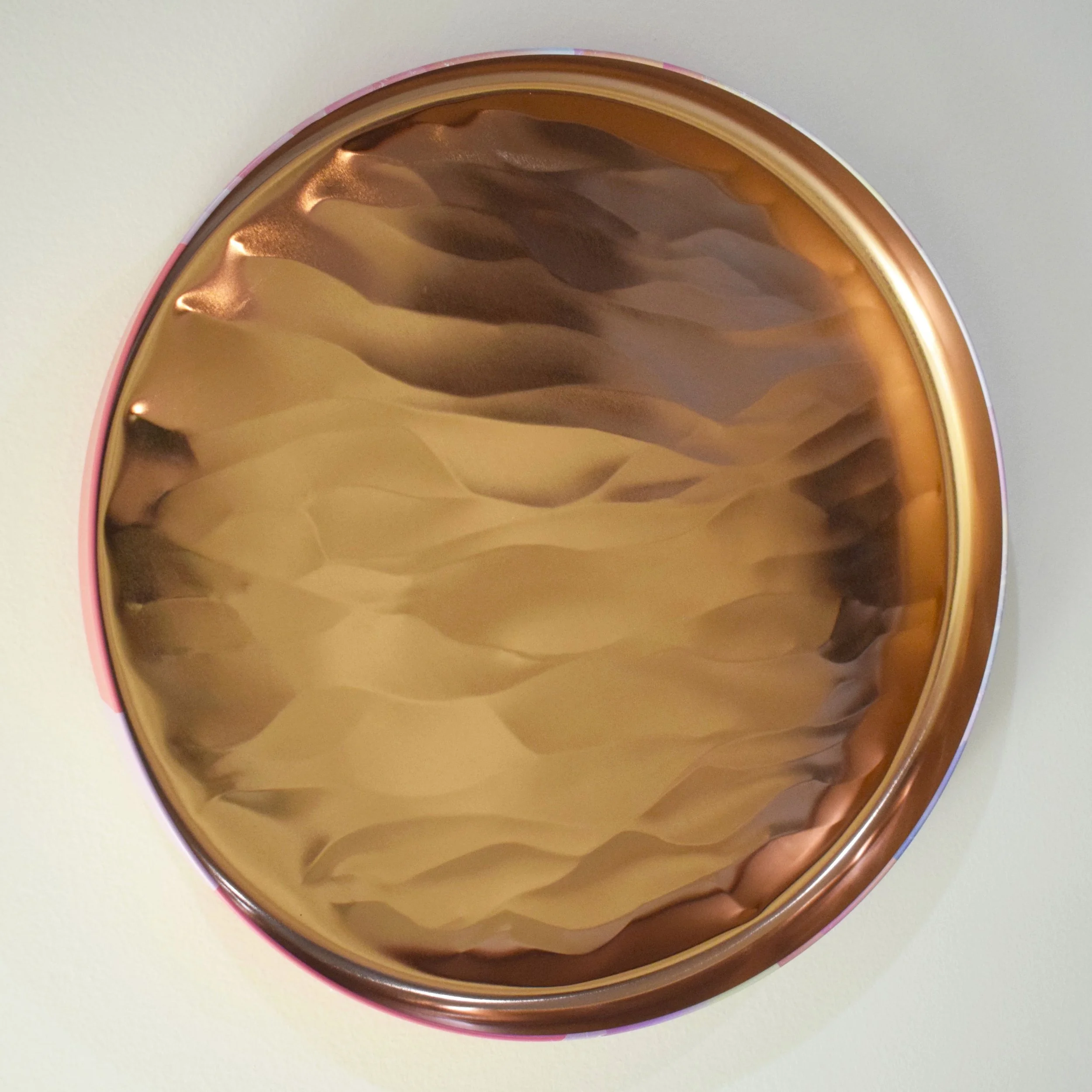MOONSquare





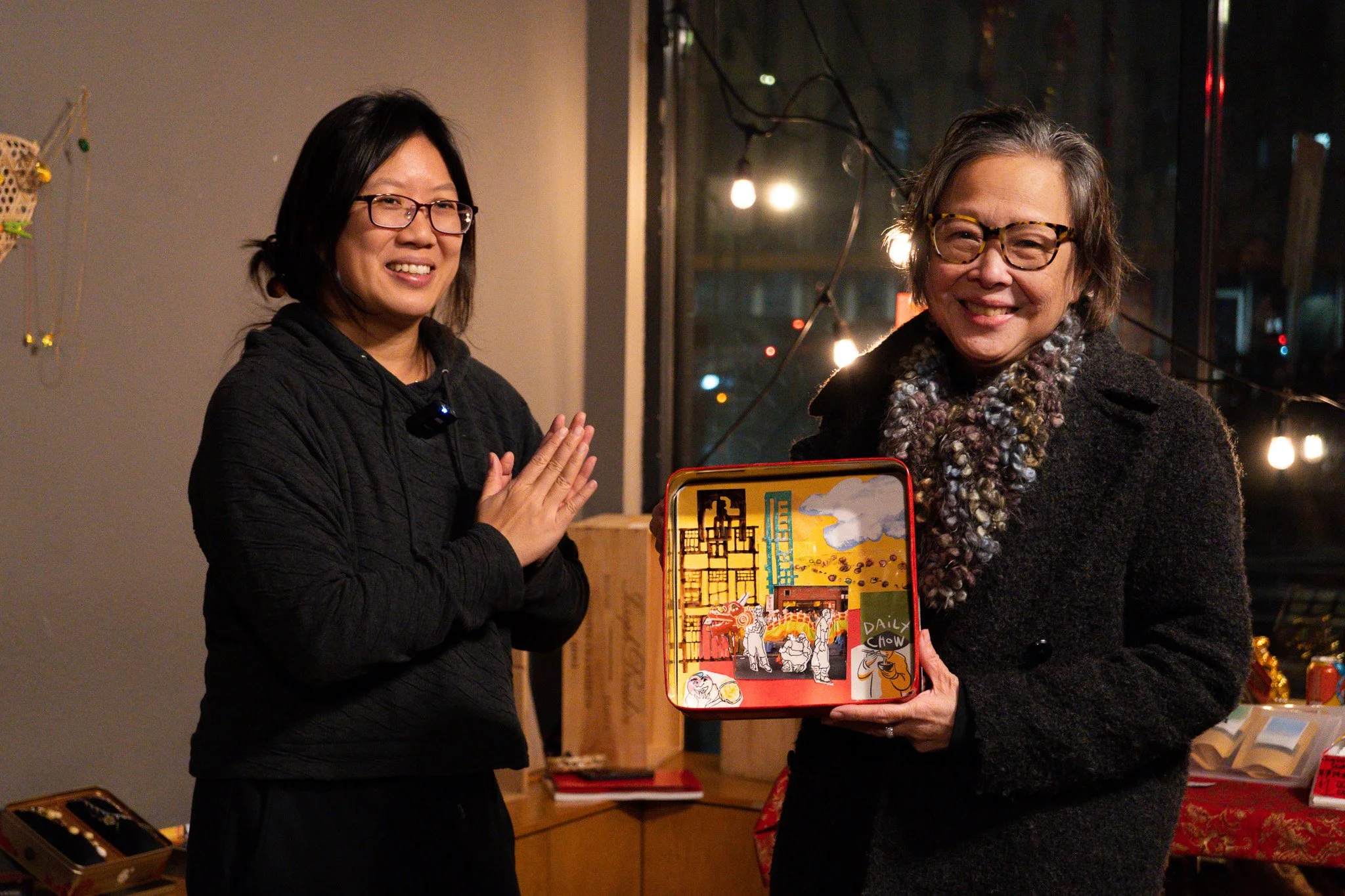

We all know what happens to mooncake tins after the mooncakes are eaten. They become treasure boxes of small things, memories, and a preserver of wishes. What can take shape in the space of a mooncake tin? In our annual open call group show, Think!Chinatown asked our community of artists to use mooncake tins as the starting point for new works of art dedicated to the spirit of the mooncake tin.
This year, our incredible community of artists have reinterpreted mooncake tins in so many exciting ways… from ceramics to film photography to needle felting and more!
Learn more about each piece below and participate in the silent auction on December 18th, from 6-8pm. There will be tangyuan and 冬至 winter solstice activities.
-
Yanyan Huang’s paintings occupy a space where tradition and intuition converge. Drawing from devotional ornamentation of baroque art, ancient cartographies, and the gestural discipline of Chinese calligraphy, her works resist linear narratives. Instead, they unfold as organic polyphonic compositions - Labyrinthine gardens of emotion, memory, and subconscious thought. A visual language emerges of airy arabesques, iridescent washes, and sweeping color fields that evoke both the sensuality of ballet and meditative ritual.
Huang’s use of automatic mark-making is not only a formal strategy but a philosophical stance - Each canvas becomes a terrain of excavation, where bodily gesture and symbolic history are interwoven. Her fluid abstraction suggests atmospheric vastness while looping back to the intimate: The inner world of a self in flux, shaped but never confined by heritage or temporal context. Her use of gesso - at once an act of concealment and a formal intentional gesture - echoes the mind’s formation of thought, where memory forms and dissolves, histories are erased, edited, or obscured. In its layered opacity, gesso becomes a visible veil and mirror, casting a critical gaze on structures both visible and invisible that contour her physical and political existence.
-
In longing we search the sky, with dreams of change on the ground. In the moon, we find a reflection of ourselves, framed by three fragments that orient us towards liberation: an oyster shell, a wire cutter, and an abolitionist’s diary.
Natalia recently graduated from architecture school. Born in Beirut and raised in Baltimore, she lives and works in NYC.
-
I painted Harvest as an exploration of the dynamics between authority, subjugation, and resistance. The imagery depicts an infant turtle rendered from my memory of an illegal street-pet vendor in Flushing’s Chinatown. When I saw these animals being sold in plastic takeout containers, I was deeply affected by their struggle to survive. Taken from infancy or born into captivity, these creatures thrashed, kicked, and bashed against their artificial walls while thousands of towering humans passed by– stopping to look but never lingering.
In this moment I was reminded of the current political climate and living conditions in America. I was struck by the irony of such cruelty taking place in Chinatown– a predominantly migrant community under crushing threat from authoritarianism, racialized violence, corporate price gouging of food and housing, tariffs for imported Chinese goods, and the ever-increasing reach of ICE.
This Mid-Autumn Festival, I decided to question: who has the right to “harvest” from others and what suppresses one’s instinct to struggle and resist? How can we redefine our relationships with nature and living beings to prevent exploitation and suffering? The painted turtles teach us that compassion and bonds between living animals are built through sustained connection and trust– not predation, captivity, and subjugation. These animals remind us how to struggle and how to rage when the harvest comes.
-
With “Untitled I: For The People” I wanted to explore some of our current events through the traditions linked to the Moon Festival.
On the cover of the box, the figure of Chang’E has been reimagined as Lady Liberty fleeing greed, violence, false and misguided patriotism, religious zealotry, and the state of constant vigilance. Avarice and violence are the new mottos of this society.
The bottom part of the box is not changed on the outside, representing the status quo, but on the inside, there is a collage of female figures, hidden in the bottom, who are affected the most by this return to the traditional patriarchal system, but who are also agents of change, rebels led by Delacroix’s Liberty.
“Untitled I: For The People” is a nod to the myth of Pandora’s box, but instead of releasing curses upon mankind, women will reshape history. The box holds Play-Doh mooncakes, in allusion to the story of the Han rebellion against the Mongols in the 14th century, in which secret messages were passed hidden in mooncakes that led to the collapse of the Mongol rule and the Yuan dynasty. Inside these mooncakes, there are hidden excerpts of the Constitution (read here) as the way to stay true to the essence of this country and as the answer to overcome the current state of affairs in the US.
-
In longing we search the sky, with dreams of change on the ground. In the moon, we find a reflection of ourselves, framed by three fragments that orient us towards liberation: an oyster shell, a wire cutter, and an abolitionist’s diary.
-
This piece is my spin on the traditional "fu" sign often found on doors to Chinese households. The "fu" is hung upside down (倒 dào), which is a homophone of "arrive" (到 dào), signifying that good fortune will arrive at the household. During this mid-autumn season, I hope that all the viewers of this will be able to experience good fortune, joy, and prosperity!
Lindsey Shi is a visual artist based in Manhattan, New York. In her art, she explores ways to express her experiences of race and ethnicity, and how art can be a tool for grief, joy, and liberation.
-
My sculpture explores comfort, space, color and texture, depicting;
Near fluorescent flowers surround a pale pink rabbit in my ‘Comfort Garden’. Driven by their tangled nature curling vines grew from the wire-binding of a drawing pad are anchored into the mooncake tin by glistening beads and heart-shaped leaves.
I sculpted a realistic rabbit with a glint in its eyes, lines drawn with seed beads inspired by the design of this Hong Kong Mx box. A small sliver of space that blooms for the moon rabbits. In my mooncake tin i wanted to create a respite for these lovely loyal creatures that have created and inspired treats for Mid-Autumn Festival.
-
These are two traditional ideas of sets (one of 2 pieces, one of 3), and another idea of what a set could be: pieces that have a strong sense of individuality, yet also coexist nicely. In a similar way, the tiny vase is content to exist on its own, but it was made to hold/ collaborate with other small pieces of beauty.
Probabilityblue is a collection of works made in the process of attempting to make the perfect piece. Along the way, I make many really good ones. Perhaps these pieces will be perfect for your tea time, morning coffee, or a way to display teeny tiny flowers :)
-
I wanted to show the legend of the moon goddess (Chang'e) associated with the mooncake. It is a tragic love story between Chang'e and her husband Hou Yi. I live in NYC Chinatown and I love the community here. I studied at RISD and New York Studio School.
-
This year's entry for Moonsquare explores the "Kitsch" factor of the global Labubu craze in the context of a futuristic bejeweled universe found inside a used Mooncake tin. Using pointillism, sequins, and neon paint, I wanted to invoke an other-worldly place where Labubus could be together during the Mid-Autumn moon festival and enjoy the beautiful and radiant Harvest moon. It is my hope that the tradition of family gathering, started many thousands of years ago in China, is able to transcend both space and time long into the future and perhaps on different planets.
-
I see my photos as an on going graphic novel of NYC, which is always in process, always expanding.
I'm a documentarist in spirit, my photo formats transformed from film to digital and, sometimes, back to film again. My images flow from social realism to manga. Yet in the end, though, my artwork is about my encounters with the city's amazing subject matter, polyglot, multifarious and disordered ... NYC itself. ~ Bonita Lei, 2025
-
In “A Box is a Portal,” Soho-based illustrator Jean Li Spencer (@maisonmanhua) considers the liminal container of the moon cake tin as a three-dimensional space which one is invited to step into, and step through. Personal memory and ancestral history possess points and vertices that ultimately map an architectural composition melding all the possibilities of the past, present, and future. Using her signature punk and Chinese-inspired aesthetics, the artist fashions a traditional Chinese doorframe that allows passage for the real and imagined: traces of Chinese folklore, Eastern and Western kitchen counterparts, and the dead and the living are tied together through the red thread of fate. For “A Box is a Portal,” the concept of reality, time, and distance is collapsed just as it is made elastic and fragile in the reunion story of the Mid-Autumn Festival.
-
Cute White Snake in Tin Box is a mixed-media artwork created to celebrate the Lunar Year of the Snake. Using recycled materials and found jewelry components, the piece combines paper cutting and collage techniques to form a playful yet intricate composition. The snake’s body, built with layered jewelry parts, creates a raised sculptural effect that gives depth and texture within the confined tin box space.
Dominated by tones of white and silver, with black eyes and a green background, the snake appears in a charming, cartoon-like form—its body curling gracefully along the ground while its head lifts upward in a joyful, welcoming gesture. Scattered flowers around the snake symbolize renewal and good fortune for the new year.
In the top right corner, the Chinese character for “snake” (蛇) is rendered in traditional seal script, carved in reverse and block printed in red ink on a yellow card, adding a cultural and calligraphic dimension to the work.
Composed within a recycled mooncake tin box (H 8 x W 8 x D 2.5 inches), this piece reflects my ongoing artistic philosophy—transforming everyday materials into meaningful expressions of cultural storytelling, sustainability, and craft tradition. Through humor, beauty, and symbolism, Cute White Snake in Tin Box bridges folk art and contemporary design, celebrating the joy and renewal embodied in the Lunar New Year.
-
This piece features a snapshot that captures the essence and wonders of Manhattan Chinatown. Mid-Autumn Festival was one of my favorite holidays as a child and it never seems to lose its magic. This was designed with original illustrations and made with laser cutting and engraving.
A Look Back at Past MOONSquares

